Top 9 Factors Influencing Pool Placement
Are you planning to build a pool and wondering where to place it? The right placement can make all the difference in your pool's usability, safety, and aesthetic appeal. Whether you're a pool builder or a homeowner, understanding the factors that influence pool placement is crucial. This guide will walk you through the top nine factors to consider when deciding where to place your pool, ensuring it becomes a cherished addition to any home.
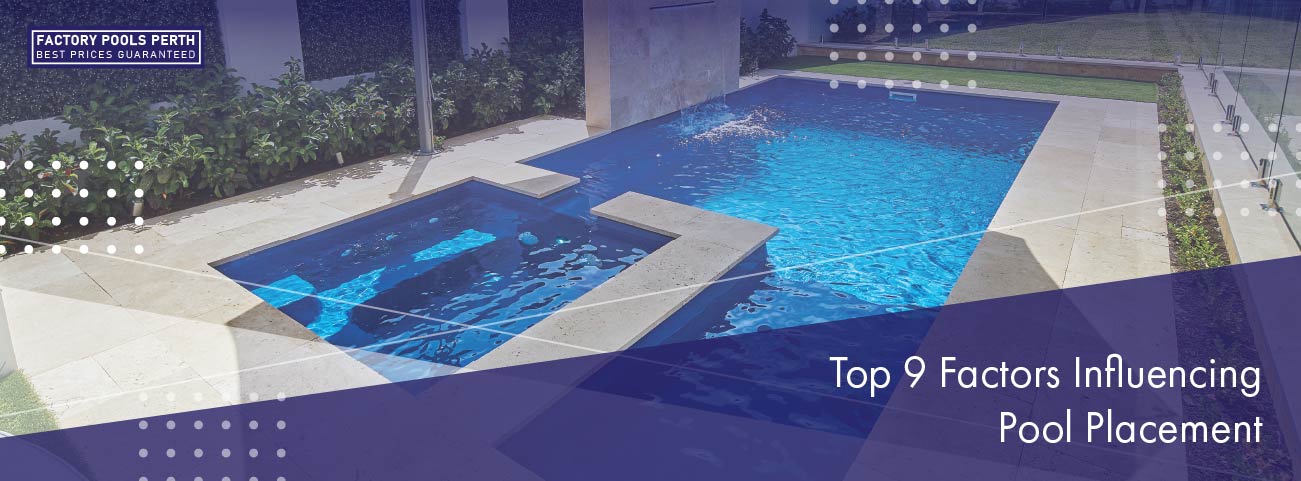
The Importance of Pool Placement
Choosing the right spot for your pool is more than just finding an open space in your backyard. Proper placement enhances your pool experience by improving safety, usability, and aesthetics. It also helps to comply with local regulations and maximise the pool’s longevity. In this guide, we’ll explore the critical factors that influence pool placement, providing you with the insights needed to make an informed decision.
Understanding the Landscape Soil, Slope, and Drainage
Before you start digging, it’s essential to understand the landscape of your property. The soil type, slope, and drainage conditions play a significant role in pool placement.
Soil Type:
Different soil types can affect the stability and structural integrity of your pool. Sandy soils drain well but may require additional support structures, while clay soils retain water and could cause shifting or cracking.
Slope:
The slope of your land impacts the excavation process and the pool’s overall design. A sloped yard may require retaining walls or graded terraces to create a level surface for your pool.
Drainage:
Proper drainage ensures that water doesn’t accumulate around the pool area, which could compromise its foundation. Assess the natural drainage patterns of your yard and plan accordingly.
Sunlight and Shade The Impact on Pool Usage and Energy Consumption
Sunlight and shade are crucial considerations for pool placement. They affect not only your swimming experience but also the pool’s maintenance and energy consumption.
Sunlight:
Placing your pool in a sunny spot can keep the water warm, reducing the need for heating. However, too much sun can lead to excessive evaporation and higher chemical usage.
Shade:
While some shade is beneficial, especially during hot summer days, too much can keep the water cold and increase heating costs. Strategically position your pool to balance sunlight and shade.
Energy Savings:
Efficient use of natural sunlight can save on energy costs. Consider using solar covers or panels to enhance energy efficiency.
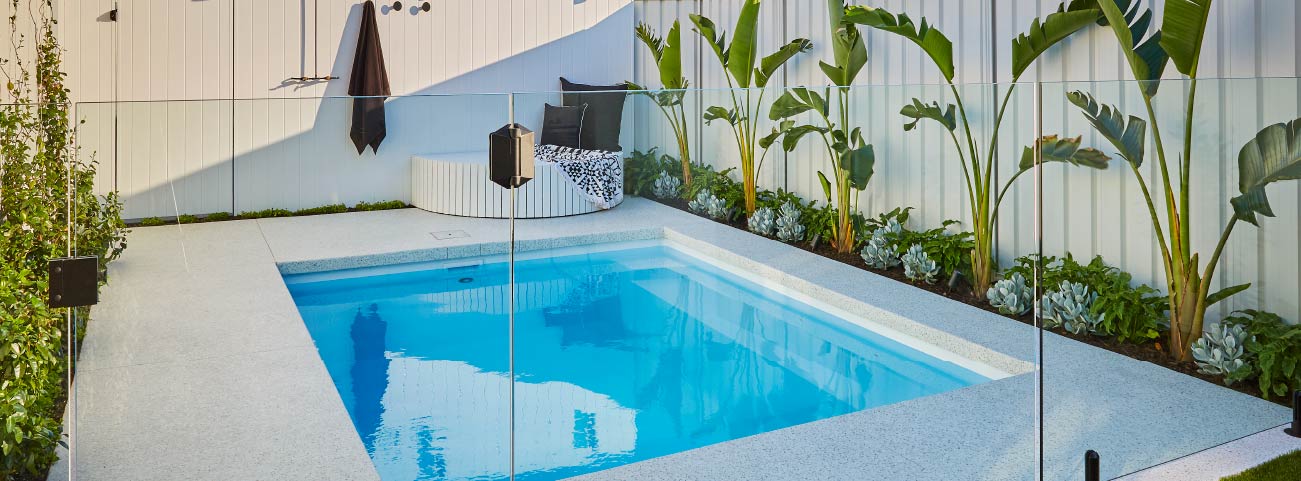
Privacy and Aesthetics Design Considerations for Placement
The placement of your pool should enhance your property’s privacy and aesthetics. Consider the following factors to create a harmonious and private pool area.
Privacy:
Ensure your pool is shielded from neighbours’ views. Use landscaping elements like trees, shrubs, and fences to create a private oasis.
Aesthetics:
The pool should complement your home’s architecture and landscape design. Think about how the pool’s shape, size, and materials will look in your yard.
Integration:
Integrate the pool with existing outdoor living spaces, such as patios and decks, to create a seamless transition between areas.
Wind Direction Minimising Debris and Enhancing Comfort
Wind direction significantly impacts the comfort and cleanliness of your pool. Proper placement can minimise debris and enhance the overall pool experience.
Debris:
Strong winds can blow leaves, dirt, and other debris into your pool. Position your pool in a location that’s sheltered from prevailing winds to reduce cleaning and maintenance.
Comfort:
Wind can also affect the comfort of swimmers. Place the pool in a spot where natural barriers, like walls or hedges, can block the wind and create a more pleasant environment.
Windbreaks:
Consider installing windbreaks, such as fences or screens, to protect your pool area from strong gusts.
Accessibility and Safety Proximity to the House and Fencing
Accessibility and safety are paramount when placing your pool. Ensure that the pool is easily accessible from your home while adhering to safety guidelines.
Proximity to the House:
A pool that’s close to the house is more convenient for supervision and access. However, it should be far enough to prevent water damage to the home’s foundation.
Safety Fencing:
Installing a safety fence around the pool is crucial to prevent accidental drownings, especially if you have children or pets. Check local regulations for fencing requirements.
Pathways:
Create well-lit, non-slip pathways leading to the pool area to prevent accidents and ensure easy access.
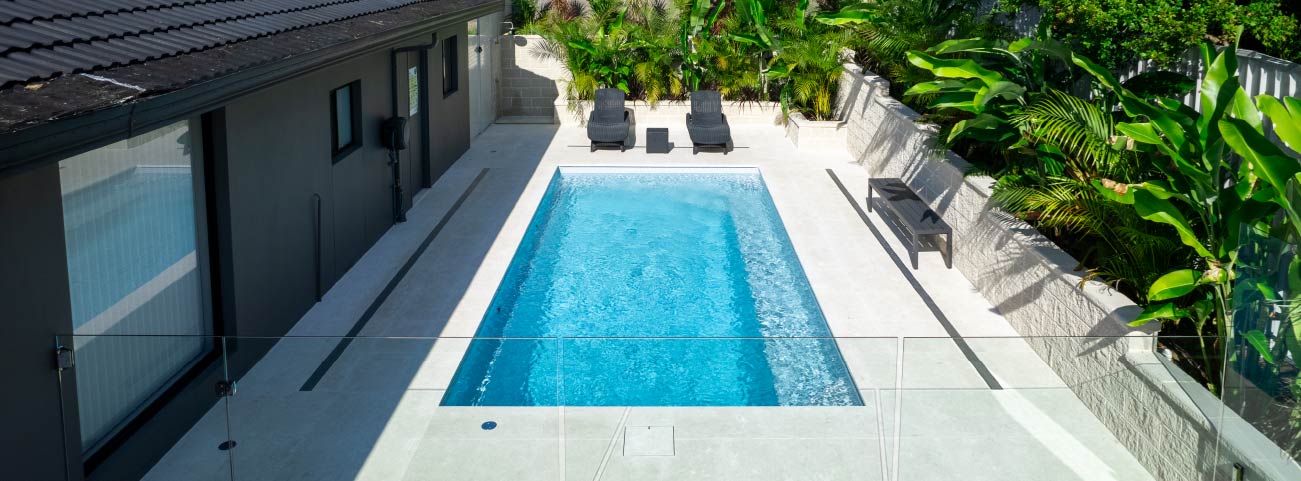
Local Regulations and Zoning Compliance and Building Codes
Before finalising your pool’s placement, it’s essential to understand and comply with local regulations and zoning laws. Non-compliance can lead to fines and delays.
Permits:
Obtain the necessary permits for pool construction. This often involves submitting detailed plans to local authorities.
Zoning Laws:
Ensure that your pool placement complies with zoning regulations. These laws dictate setbacks, maximum pool dimensions, and other restrictions.
Building Codes:
Adhere to building codes that specify safety features, such as fencing, pool covers, and alarms.
Future Planning Considering Growth and Home Resale Value
Think long-term when placing your pool. Consider future growth and how the pool will impact your home’s resale value.
Expansion Plans:
If you plan to expand your home or add other outdoor features, ensure the pool’s placement won’t interfere with future projects.
Resale Value:
A well-placed pool can enhance your home’s resale value. Avoid placing the pool in awkward or undesirable locations that could deter potential buyers.
Landscaping:
Plan for landscaping that will mature gracefully over time, adding to the pool area’s beauty and functionality.
Conclusion
Choosing the right spot for your pool involves careful consideration of various factors, from the landscape and sunlight to privacy and local regulations. By taking these elements into account, you can create a pool that’s not only beautiful and functional but also enhances your home’s overall appeal.
If you’re ready to take the plunge and need expert advice, our team at [Brand Name] is here to help. Contact us today to learn more about our pool placement services and start planning your dream pool.
Top 9 Factors Influencing Pool Placement
Are you planning to build a pool and wondering where to place it? The right placement can make all the difference in your pool's usability, safety, and aesthetic appeal. Whether you're a pool builder or a homeowner, understanding the factors that influence pool placement is crucial. This guide will walk you through the top nine factors to consider when deciding where to place your pool, ensuring it becomes a cherished addition to any home.
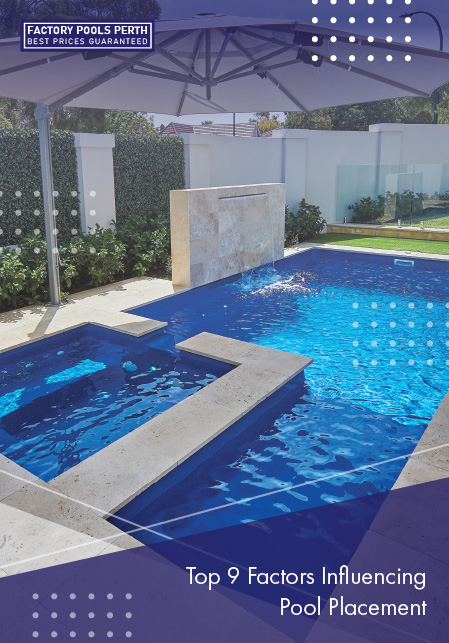
The Importance of Pool Placement
Choosing the right spot for your pool is more than just finding an open space in your backyard. Proper placement enhances your pool experience by improving safety, usability, and aesthetics. It also helps to comply with local regulations and maximise the pool’s longevity. In this guide, we’ll explore the critical factors that influence pool placement, providing you with the insights needed to make an informed decision.
Understanding the Landscape Soil, Slope, and Drainage
Before you start digging, it’s essential to understand the landscape of your property. The soil type, slope, and drainage conditions play a significant role in pool placement.
Soil Type:
Different soil types can affect the stability and structural integrity of your pool. Sandy soils drain well but may require additional support structures, while clay soils retain water and could cause shifting or cracking.
Slope:
The slope of your land impacts the excavation process and the pool’s overall design. A sloped yard may require retaining walls or graded terraces to create a level surface for your pool.
Drainage:
Proper drainage ensures that water doesn’t accumulate around the pool area, which could compromise its foundation. Assess the natural drainage patterns of your yard and plan accordingly.
Sunlight and Shade The Impact on Pool Usage and Energy Consumption
Sunlight and shade are crucial considerations for pool placement. They affect not only your swimming experience but also the pool’s maintenance and energy consumption.
Sunlight:
Placing your pool in a sunny spot can keep the water warm, reducing the need for heating. However, too much sun can lead to excessive evaporation and higher chemical usage.
Shade:
While some shade is beneficial, especially during hot summer days, too much can keep the water cold and increase heating costs. Strategically position your pool to balance sunlight and shade.
Energy Savings:
Efficient use of natural sunlight can save on energy costs. Consider using solar covers or panels to enhance energy efficiency.
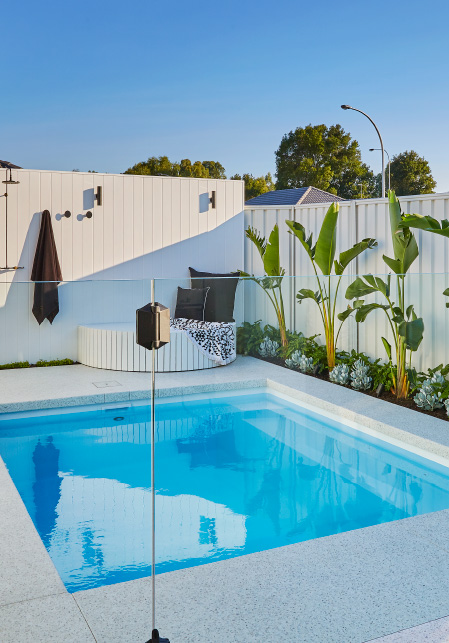
Privacy and Aesthetics Design Considerations for Placement
The placement of your pool should enhance your property’s privacy and aesthetics. Consider the following factors to create a harmonious and private pool area.
Privacy:
Ensure your pool is shielded from neighbours’ views. Use landscaping elements like trees, shrubs, and fences to create a private oasis.
Aesthetics:
The pool should complement your home’s architecture and landscape design. Think about how the pool’s shape, size, and materials will look in your yard.
Integration:
Integrate the pool with existing outdoor living spaces, such as patios and decks, to create a seamless transition between areas.
Wind Direction Minimising Debris and Enhancing Comfort
Wind direction significantly impacts the comfort and cleanliness of your pool. Proper placement can minimise debris and enhance the overall pool experience.
Debris:
Strong winds can blow leaves, dirt, and other debris into your pool. Position your pool in a location that’s sheltered from prevailing winds to reduce cleaning and maintenance.
Comfort:
Wind can also affect the comfort of swimmers. Place the pool in a spot where natural barriers, like walls or hedges, can block the wind and create a more pleasant environment.
Windbreaks:
Consider installing windbreaks, such as fences or screens, to protect your pool area from strong gusts.
Accessibility and Safety Proximity to the House and Fencing
Accessibility and safety are paramount when placing your pool. Ensure that the pool is easily accessible from your home while adhering to safety guidelines.
Proximity to the House:
A pool that’s close to the house is more convenient for supervision and access. However, it should be far enough to prevent water damage to the home’s foundation.
Safety Fencing:
Installing a safety fence around the pool is crucial to prevent accidental drownings, especially if you have children or pets. Check local regulations for fencing requirements.
Pathways:
Create well-lit, non-slip pathways leading to the pool area to prevent accidents and ensure easy access.
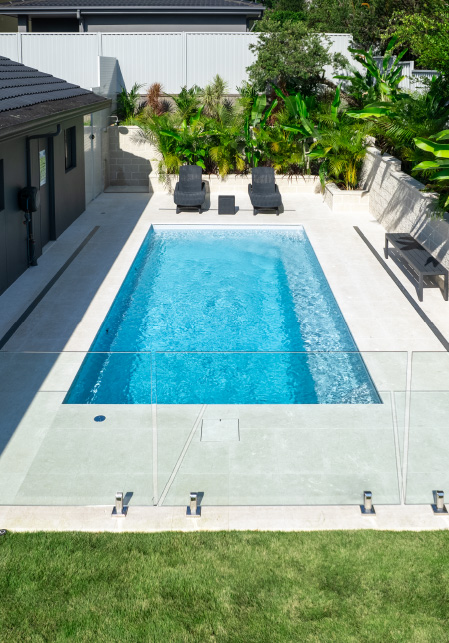
Local Regulations and Zoning Compliance and Building Codes
Before finalising your pool’s placement, it’s essential to understand and comply with local regulations and zoning laws. Non-compliance can lead to fines and delays.
Permits:
Obtain the necessary permits for pool construction. This often involves submitting detailed plans to local authorities.
Zoning Laws:
Ensure that your pool placement complies with zoning regulations. These laws dictate setbacks, maximum pool dimensions, and other restrictions.
Building Codes:
Adhere to building codes that specify safety features, such as fencing, pool covers, and alarms.
Future Planning Considering Growth and Home Resale Value
Think long-term when placing your pool. Consider future growth and how the pool will impact your home’s resale value.
Expansion Plans:
If you plan to expand your home or add other outdoor features, ensure the pool’s placement won’t interfere with future projects.
Resale Value:
A well-placed pool can enhance your home’s resale value. Avoid placing the pool in awkward or undesirable locations that could deter potential buyers.
Landscaping:
Plan for landscaping that will mature gracefully over time, adding to the pool area’s beauty and functionality.
Conclusion
Choosing the right spot for your pool involves careful consideration of various factors, from the landscape and sunlight to privacy and local regulations. By taking these elements into account, you can create a pool that’s not only beautiful and functional but also enhances your home’s overall appeal.
If you’re ready to take the plunge and need expert advice, our team at [Brand Name] is here to help. Contact us today to learn more about our pool placement services and start planning your dream pool.



